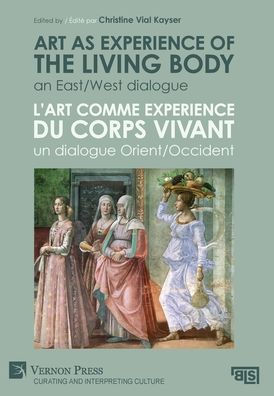This book analyses the dynamic relationship between art and subjective consciousness, following a phenomenological, pragmatist and enactive approach.
It brings out a new approach to the role of the body in art, not as a speculative object or symbolic material but as the living source of the imaginary. It contains theoretical contributions and case studies taken from various artistic practices (visual art, theatre, literature and music), Western and Eastern, the latter concerning China, India and Japan.
These contributions allow us to nourish the debate on embodied cognition and aesthetics, using theory-philosophy, art history, neuroscience-and the authors' personal experience as artists or spectators. According to the Husserlian method of "reduction" and pragmatist introspection, they postulate that listening to bodily sensations-cramps, heartbeats, impulsive movements, eye orientation-can unravel the thread of subconscious experience, both active and affective, that emerge in the encounter between a subject and an artwork, an encounter which, following John Dewey, we deem to be a case study for life in general.
Ce livre analyse la relation dynamique entre l'art et la conscience subjective, selon une approche phénoménologique, pragmatiste et enactive. Il vise à faire émerger une nouvelle approche du rôle du corps dans l'art, non pas comme objet spéculatif ou matériau symbolique, mais comme source vivante de l'imaginaire. Les contributions théoriques et les études de cas sont prises à diverses pratiques artistiques (arts visuels, théâtre, littérature et musique), occidentales et orientales, ces dernières concernant la Chine, l'Inde et le Japon.
Selon la méthode husserlienne de réduction , en écho à l'introspection pragmatiste, les textes témoignent que l'écoute des sensations corporelles - crampes, battements de cœur, mouvements pulsionnels, orientation des yeux - mises en jeu par l'œuvre, permet de dénouer le fil de l'expérience inconsciente, à la fois kinesthésique et affective, qui émerge dans la rencontre entre un sujet et une œuvre d'art, une rencontre comprise, à la manière de Dewey, comme un cas d'école de la vie en général.
This book analyses the dynamic relationship between art and subjective consciousness, following a phenomenological, pragmatist and enactive approach.
It brings out a new approach to the role of the body in art, not as a speculative object or symbolic material but as the living source of the imaginary. It contains theoretical contributions and case studies taken from various artistic practices (visual art, theatre, literature and music), Western and Eastern, the latter concerning China, India and Japan.
These contributions allow us to nourish the debate on embodied cognition and aesthetics, using theory-philosophy, art history, neuroscience-and the authors' personal experience as artists or spectators. According to the Husserlian method of "reduction" and pragmatist introspection, they postulate that listening to bodily sensations-cramps, heartbeats, impulsive movements, eye orientation-can unravel the thread of subconscious experience, both active and affective, that emerge in the encounter between a subject and an artwork, an encounter which, following John Dewey, we deem to be a case study for life in general.
Ce livre analyse la relation dynamique entre l'art et la conscience subjective, selon une approche phénoménologique, pragmatiste et enactive. Il vise à faire émerger une nouvelle approche du rôle du corps dans l'art, non pas comme objet spéculatif ou matériau symbolique, mais comme source vivante de l'imaginaire. Les contributions théoriques et les études de cas sont prises à diverses pratiques artistiques (arts visuels, théâtre, littérature et musique), occidentales et orientales, ces dernières concernant la Chine, l'Inde et le Japon.
Selon la méthode husserlienne de réduction , en écho à l'introspection pragmatiste, les textes témoignent que l'écoute des sensations corporelles - crampes, battements de cœur, mouvements pulsionnels, orientation des yeux - mises en jeu par l'œuvre, permet de dénouer le fil de l'expérience inconsciente, à la fois kinesthésique et affective, qui émerge dans la rencontre entre un sujet et une œuvre d'art, une rencontre comprise, à la manière de Dewey, comme un cas d'école de la vie en général.

Art as experience of the living body / L'art comme experience du corps vivant: An East/West dialogue / Un dialogue Orient/Occident
794
Art as experience of the living body / L'art comme experience du corps vivant: An East/West dialogue / Un dialogue Orient/Occident
794
Product Details
| ISBN-13: | 9781648896064 |
|---|---|
| Publisher: | Vernon Press |
| Publication date: | 12/08/2023 |
| Series: | Curating and Interpreting Culture |
| Pages: | 794 |
| Product dimensions: | 6.00(w) x 9.00(h) x 1.69(d) |
| Language: | Multiple Languages |
